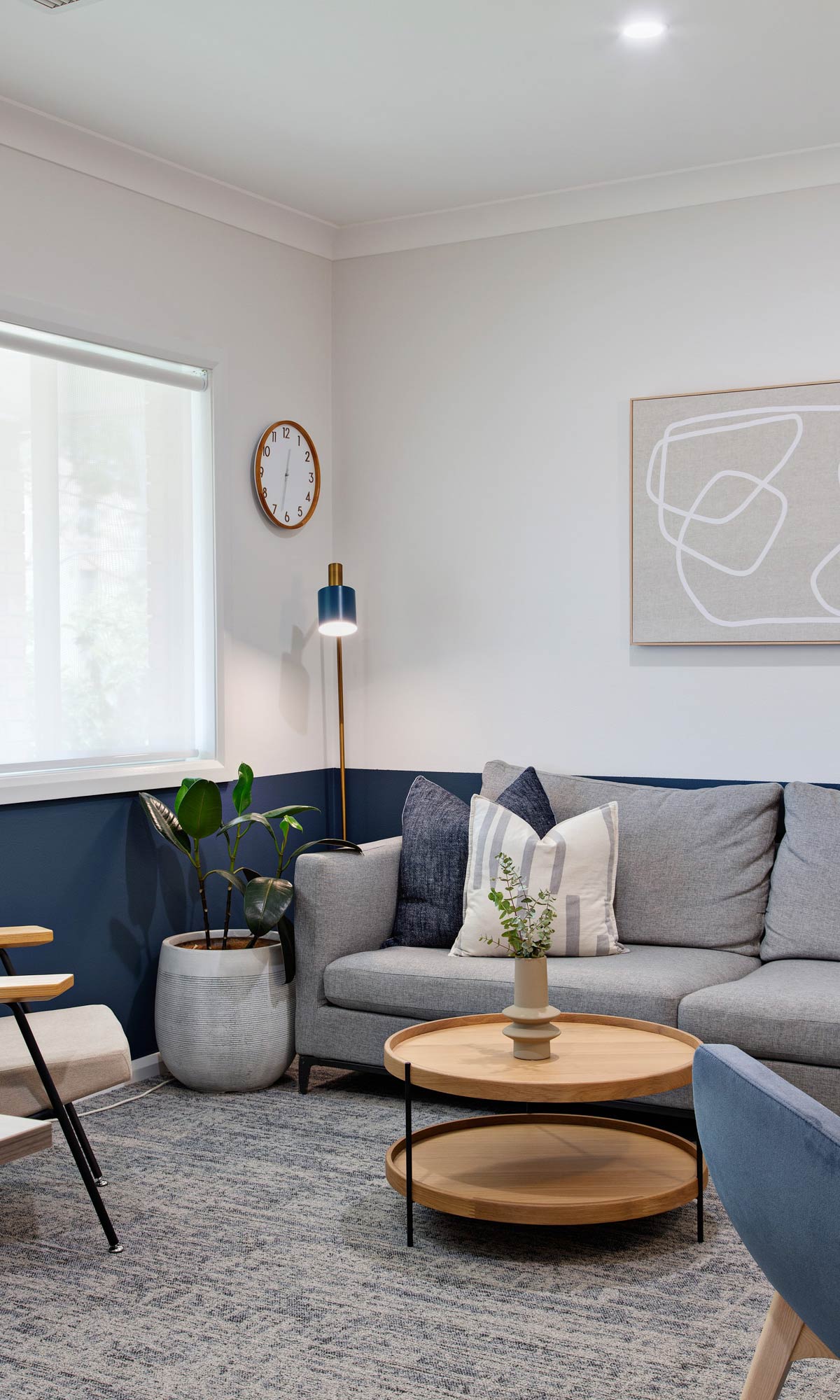
The colours used in your healthcare practice will impact both patients and staff. Healthcare design company Evoke Projects looks at how colour affects well-being, with advice on using colour effectively within your medical fit-out.
Colour is very powerful, with the potential to change the way we feel on any day in any space. There are even medically reviewed articles written about colour psychology. See e.g. How Colors Impact Moods, Feelings, and Behaviors by Kendra Cherry.1 She writes that certain colours have been associated with physiological changes, including increased blood pressure, increased metabolism and eyestrain.
Cherry also refers to the practice of “colorology” as a holistic or alternative treatment.2
• Red is used to stimulate the body and mind and to increase circulation.
• Yellow is thought to stimulate the nerves and purify the body.
• Orange is used to heal the lungs and to increase energy levels.
• Blue is believed to soothe illnesses and treat pain.
• Indigo shades are thought to alleviate skin problems.
She also writes about a 2020 study that suggested “chromotherapy” may be an effective way to help combat feelings of compassion fatigue and post-traumatic stress in intensive care unit nurses.3
Colours have associated moods, but it’s important to add a contextual background. For example, cultural differences, brand association, personal preferences, lighting and fashion may all impact somebody’s reaction to a colour within your medical design.
The age of your patients is an important consideration within a healthcare fit-out. Children and adults have very different reactions to colour.
Historically, white was often used in medical fit-outs. People associate white with a sterile, clean environment. While this is desirable in examination and treatment rooms, white is not the most welcoming colour for a waiting area. Nature-inspired colours, such as blue and green, are more calming and relaxing, which will help dispel feelings of anxiety.
• Red and Orange: Warm, exciting, attention grabbing, but can be overwhelming.
• Blue: Calming, relaxing, trust, natural, aids concentration, but can be cold.
• Yellow: Energetic, happy, stimulating, collaborative, but can be tiring.
• Green: Natural, balance, calming, good for focus and well-being.
• Brown: Reliability, stability, natural.
• Purple: Luxury, creativity, elegance.
• White: Simple, clean but can be cold.
• Black: Sophisticated, formal, but can be depressing.
• Neutrals: Calming, minimalist, relaxing.
Tones (e.g. warmer or lighter tones) will reduce the negative impact of a colour. Colours that evoke strong emotions can be used as an accent colour rather than on whole walls.
Let’s not forget Mother Nature’s own colour – natural light. For both patients and staff, natural light will influence the perception of any colour, warming with sunlight rays and lighting up a drab interior. Natural light also regulates circadian rhythms, improving sleep quality and overall health.
Natural light is an important component of biophilic design. Biophilia means “love of living things”, and biophilic elements in the medical design promote wellness and boost mental health. Nature-inspired colours, such as blue, green and brown, are on the biophilic colour spectrum and influence the subconscious mind with their link to sea, sky, plants, trees and earth.
Lighting affects colour ‘temperature’ depending on the Kelvin (K) rating of a light globe or device. The lower the K, the warmer the tone.
• Soft White (2700K-3000K) is cosy, with warm, yellow tones.
• Warm White (3000-4000K) is warm and welcoming.
• Bright White (4000-5000K) is a bright, neutral white.
• Daylight (5000K-6500K) has cool, blue white tones.
Medical settings generally need to be above 3500K, unless there are consultations that will benefit from muted light, such as therapists’ offices, migraine consults and sleep studies. For most healthcare practices, warmer light will be more welcoming that cool lights in a waiting room. Examination rooms will benefit from 4000K+, while staff involved in long surgeries will prefer daylight lighting 5000K+.
If patients may need to lie down at any time, ensure your healthcare interior designers spend some time doing the same before finalising the lighting choice!
There is so much more potential for using colour within your medical fit-out than just the walls. Ceiling tiles, curtains, screens, dividers, stair rails, door handles, waiting room furniture, medical furniture, rugs, cushions, artwork, plants, light fittings… Even if you choose a primarily neutral colour in one zone, a pop of a brighter colour will provide visual stimulation without overwhelming a space.
To discuss the best use of colour within your healthcare design and fit-out, please call Evoke Projects on 1300 720 692.